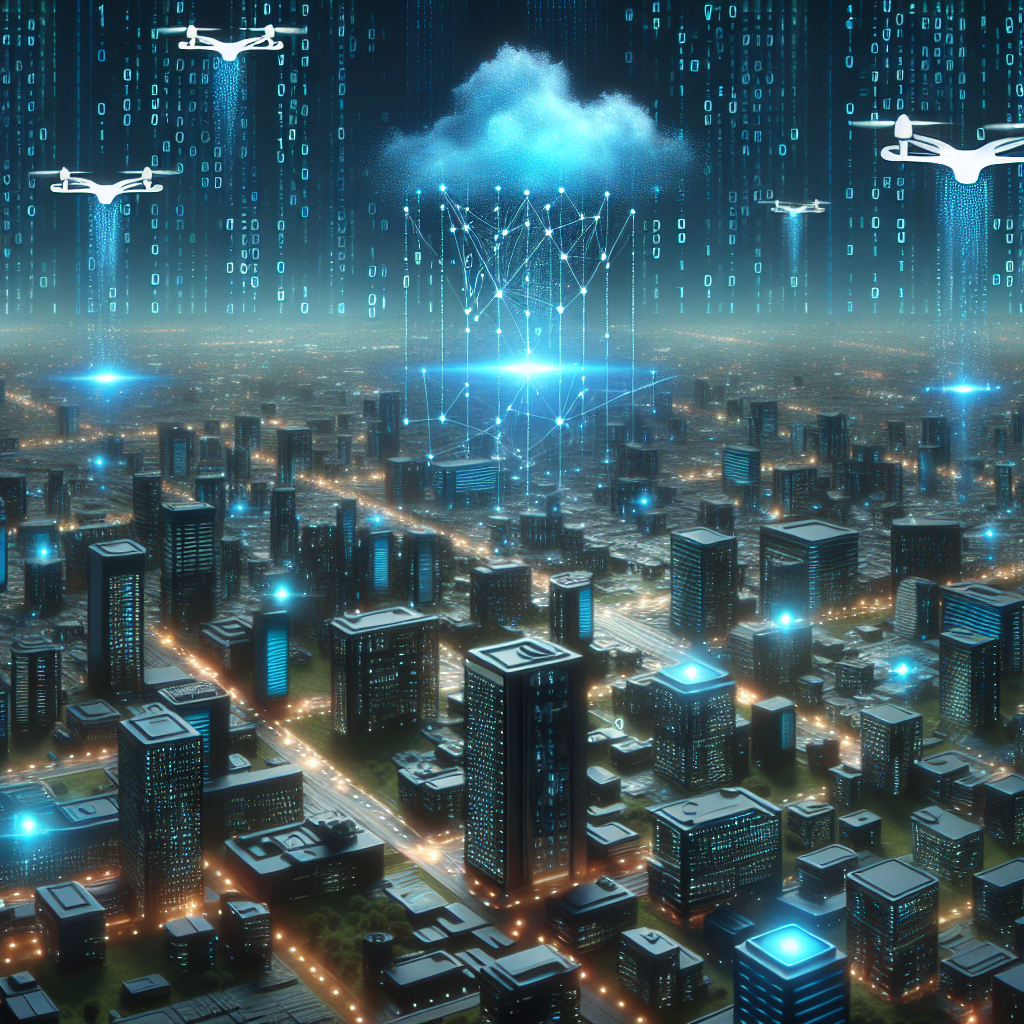The Use of AI in Predictive Policing
In recent years, the use of artificial intelligence (AI) in predictive policing has become increasingly common. Predictive policing refers to the use of data analysis and AI algorithms to identify potential criminal activity and deploy resources to prevent or respond to it. This technology has been touted as a way to improve law enforcement efficiency and effectiveness, but it has also raised concerns about privacy, bias, and civil liberties. In this article, we will explore the use of AI in predictive policing, its benefits, challenges, and implications.
Benefits of AI in Predictive Policing
One of the main benefits of using AI in predictive policing is its ability to analyze large amounts of data quickly and efficiently. By processing data from various sources such as crime reports, criminal records, social media, and surveillance cameras, AI algorithms can identify patterns and trends that may not be immediately obvious to human analysts. This can help law enforcement agencies to allocate resources more effectively and proactively prevent crime.
AI algorithms can also help identify high-risk individuals or locations that are more likely to be involved in criminal activity. By focusing on these areas, law enforcement can target their efforts and resources more strategically, potentially reducing crime rates and improving public safety.
Furthermore, AI can help law enforcement agencies to better allocate their resources and personnel. By using predictive analytics, agencies can determine where and when crimes are most likely to occur, allowing them to deploy officers and resources accordingly. This can lead to more efficient use of resources, reduced response times, and ultimately, improved public safety.
Challenges and Concerns
Despite its potential benefits, the use of AI in predictive policing also raises a number of challenges and concerns. One of the main concerns is the potential for biases in the data and algorithms used in predictive policing. If the data used to train AI algorithms is biased or incomplete, it can lead to discriminatory outcomes and reinforce existing inequalities in the criminal justice system. For example, if historical crime data is biased against certain groups, AI algorithms may unfairly target those groups for increased surveillance or policing.
Another concern is the lack of transparency and accountability in AI algorithms used in predictive policing. Many of these algorithms are proprietary and their inner workings are not disclosed to the public. This lack of transparency makes it difficult to assess the accuracy and fairness of these algorithms, leading to concerns about their reliability and potential for abuse.
Furthermore, the use of AI in predictive policing raises significant privacy concerns. By analyzing vast amounts of data from various sources, including social media and surveillance cameras, AI algorithms can intrude on individuals’ privacy and potentially violate their civil liberties. There is also the risk of data breaches and misuse of personal information by law enforcement agencies, leading to further erosion of trust between the public and the police.
Implications for Society
The use of AI in predictive policing has significant implications for society as a whole. On one hand, it has the potential to improve public safety and reduce crime rates by enabling law enforcement agencies to be more proactive and targeted in their efforts. By identifying high-risk areas and individuals, AI algorithms can help prevent crimes before they occur, leading to safer communities and more efficient use of resources.
However, there are also concerns that the use of AI in predictive policing could exacerbate existing inequalities and biases in the criminal justice system. If AI algorithms are not properly vetted and tested for biases, they could perpetuate discriminatory practices and unfairly target certain groups for increased surveillance and policing. This could lead to further marginalization and distrust of law enforcement among already vulnerable communities.
Furthermore, the lack of transparency and accountability in AI algorithms used in predictive policing raises questions about the fairness and legitimacy of these practices. Without proper oversight and regulation, there is a risk that AI algorithms could be used to justify discriminatory practices and infringe on individuals’ rights and freedoms.
FAQs
Q: How accurate are AI algorithms used in predictive policing?
A: The accuracy of AI algorithms used in predictive policing can vary depending on the quality of the data and algorithms used. Some studies have shown that AI algorithms can be as accurate or even more accurate than human analysts in predicting crime patterns. However, there are also concerns about biases in the data and algorithms that can lead to inaccurate or discriminatory outcomes.
Q: How can biases in AI algorithms be mitigated in predictive policing?
A: To mitigate biases in AI algorithms used in predictive policing, it is important to ensure that the data used to train these algorithms is representative and diverse. This can involve collecting data from a variety of sources and ensuring that it is free from biases and inaccuracies. It is also important to test and validate AI algorithms for biases and ensure that they are transparent and accountable.
Q: What are some privacy concerns related to the use of AI in predictive policing?
A: Some privacy concerns related to the use of AI in predictive policing include the potential for mass surveillance, data breaches, and misuse of personal information. By analyzing large amounts of data from various sources, AI algorithms can intrude on individuals’ privacy and potentially violate their civil liberties. There is also the risk of data breaches and misuse of personal information by law enforcement agencies, leading to further erosion of trust between the public and the police.
In conclusion, the use of AI in predictive policing has the potential to improve law enforcement efficiency and effectiveness, but it also raises significant concerns about biases, transparency, accountability, and privacy. It is important for law enforcement agencies to carefully consider these issues and ensure that AI algorithms are used responsibly and ethically to uphold public trust and protect individuals’ rights and freedoms.

